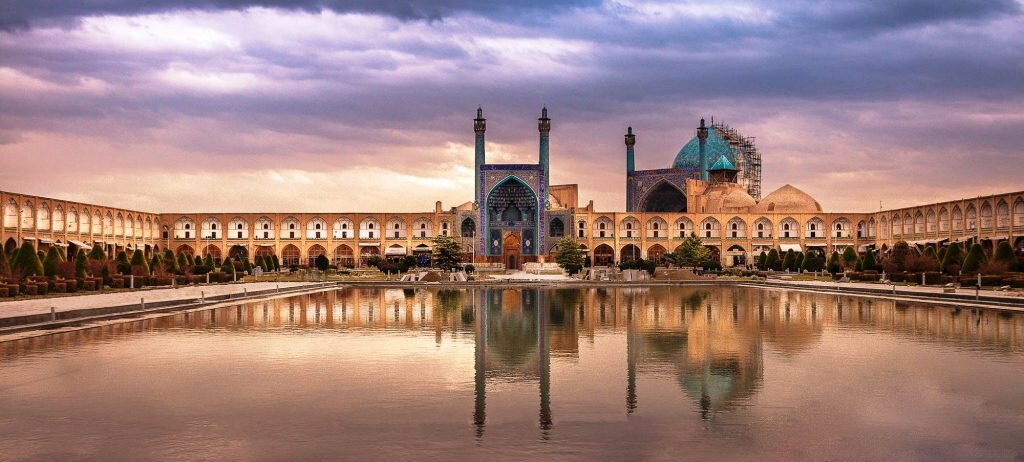A tough race to save Isfahan's cultural treasures from landslide

TEHRAN - The relatively insane speed of land subsidence is triggering destructive impact on the cultural gems of Isfahan, which is widely known as “half of the world."
Based on available data, Isfahan has the highest risk of land subsidence in the country, and in terms of the number of cities and the amount of worn-out fabric, it ranks first in the zoning of subsidence.
Sources say that subsidence in Isfahan is moving at a crazy speed; now, after the penetration of this phenomenon into the residential structures, facilities, and basic infrastructures, it has reached the thresholds of some historical monuments.
In fact, land subsidence like a quiet earthquake changes the vertical location (settlement) of the earth’s surface so it inflicts destructive effects on buildings, roads, and infrastructure.
Devastating drought, excessive use of underground water, lack of perpetual water flow in the river of Zayandeh Rood, reduction of downpours, and other water resources have fueled this crisis, according to experts.
Meanwhile, experts and cultural heritage devotees have always warned about the dangers and threats caused by the expansion of land subsidence across the ancient city.
Recently, those warnings have become more serious along with a routine discovery of new cracks creeping into the heart of a majestic city, which was once the capital of Iran.
Surveys show that in the past months, traces of subsidence have reached monuments such as Abbasi Jame Mosque, Hakim and Atiq Mosque and Shahshahan Mausoleum, Vazir Bathhouse, Ali Qoli Agha mosque and bathhouse, Seyed Mosque, to name a few.
The cracks can be seen on the walls of other treasured works such as Si-o-seh Pol (“33-Arched Bridge”), the Khaju Bridge, etc.
The same challenge even threatens the whole of Isfahan province, which is home to about 22,000 historical monuments, seven of which gained UNESCO labels.
If before this, the north of Isfahan was one of the unfavorable and critical areas and everyone talked about the high rate of subsidence in these areas, now, according to many geological experts, the subsidence has covered all areas of Isfahan and is progressing.
An official with Isfahan’s cultural heritage directorate says: “The main cause of the subsidence should be addressed, which is the drying up of Zayandeh Rood.”
“If necessary, we will ask for help from international experts to check the condition of Naqsh-e Jahan Square and its cultural elements, which is a UNESCO World Heritage.”
"These sensitive and magnificent huge buildings cannot be risked, and we will take help from all scientific facilities and capabilities at the international level," the official underlined.
The Geological Organization of the country has announced that the rate of land subsidence in Isfahan is between 15 and 18 centimeters per year, while a subsidence of more than four millimeters is considered a water crisis in the world.
Half the world?
Isfahan was once a crossroads of international trade and diplomacy in Iran and now it is one of Iran’s top tourist destinations for good reasons.
When Shah Abbas the Great became ruler of Persia's Safavid dynasty in 1587, he chose Isfahan as his capital and undertook to make it eclipse all other cities. During his reign, he built so many palaces, mosques, gardens, and bridges that the inhabitants boasted: “Isfahan nesfe Jahan”— “Isfahan is half the world.” The subtle nickname implies that seeing Isfahan is relevant to seeing half the world.
Shah Abbas’s immediate successors continued the beautification. According to a contemporary, Isfahan, a city of 600,000, had 162 mosques, 48 colleges, 273 public baths, and no fewer than 1,802 caravanserais — open courtyards surrounded with buildings, which served as medieval tourist parks where travelers could find water for their camels and food and lodging for themselves.
The city is filled with many architectural wonders, such as unmatched Islamic buildings, bazaars, museums, Persian gardens, and tree-lined boulevards. It's a city for walking, getting lost in its mazing bazaars, dozing in beautiful gardens, and meeting people. Moreover, it is renowned not only for the abundance of great historical bridges but also for its ‘life-giving river’, the Zayandeh Road, which has long bestowed the city an original beauty and fertility.
The cool blue tiles of Isfahan's Islamic buildings, and the city's majestic bridges, contrast perfectly with the encircling hot, dry Iranian countryside.
The huge Imam Square, best known as Naghsh-e Jahan Sq. (literary meaning “Image of the World”), is one of the largest in the world (500m by 160m), and a majestic example of town planning. Constructed in the early 17th century, the UNESCO-registered square is punctuated with the most interesting sights in Isfahan.
The square was at the heart of the Safavid capital’s culture, economy, religion, social power, government, and politics. It is hemmed on four sides by magnificent buildings: to the east, the Sheikh Lotfollah Mosque; to the west, the palace of Ali Qapu; to the north, the portico of Qeysarieh; and to the south, the eminent Imam Mosque.
AFM
Leave a Comment